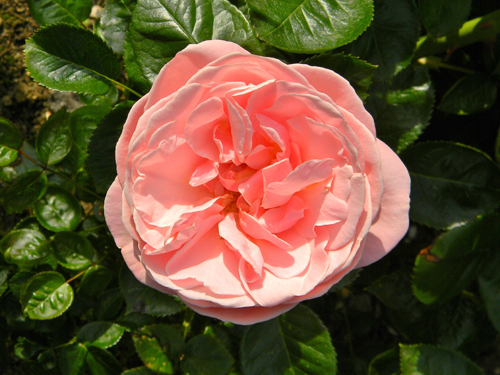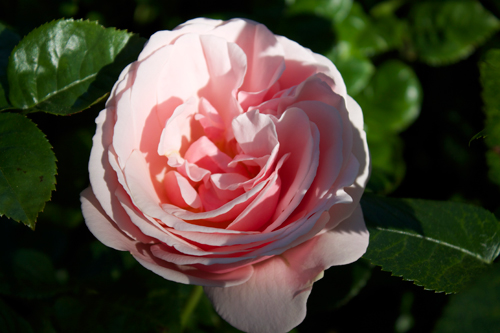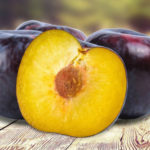Rose Aphrodite (Aphrodite)
Many members of the Pink family have female names. But only a few roses are named after any famous personalities. The heroine of our story even received the name of the goddess - the most charming inhabitant of Olympus Aphrodite. This flower queen will definitely take a well-deserved place of honor in your garden.

History of appearance
The variety was bred by the Tantau company, which is located in Germany and is one of the oldest European nurseries. This happened in 2006, so this type of noble plant can be considered a novelty. In the documentation and catalogs, the hybrid is listed under the working name Tan00847. The direct author of the variety is Hans Jürgen Evers.
The rose was quickly appreciated in the Old World. She has received many awards. Already in the second year of its existence, the cold beauty became the owner of the Gold Standard title and the Quality Certificate in the British city of Belfast. And 2009 brought the magnificent Aphrodite a gold medal at a competition in Glazkov.
Description of appearance and features
Aphrodite belongs to the group of tea hybrids. Some experts classify it as a scrub. But in any case, the plant has the features of old roses. This concerns the structure and shape of the flower. Densely double, cupped, it is, as it were, divided into 4 equal parts, which are miniature rosettes, and is formed by delicate petals, the minimum number of which is 40 pieces. One bud is formed on each stem of this beautiful plant. Expanding fully, the flower is 10 to 12 cm in diameter. In this phase, a bunch of brown stamens with a golden tint, located in the center of the inflorescence, becomes noticeable. The color of the flowers of the variety is sustained in pastel colors. The shade of the flower petals of this culture is called apricot pink or porcelain pink. The buds are characterized by a spherical shape and a greenish color.

Aphrodite looks like a neat bush of compact size. The height of the plant does not exceed 0.8 meters, and the width is 60 cm. In the southern regions, the culture can grow up to 120 cm. Strong shoots from a beauty are of the same length, and therefore do not knock out of the total mass of the shrub. Dense, large, rich dark green leaves densely cover the perennial.
The flowers of the noble lady exude a pleasant and rather strong aroma. It has notes of lime and herbs. Inflorescences strew the rose bush evenly. Fading buds are immediately replaced by new ones. The flowering nature of this variety is remontant. The budding period is divided into three waves, characterized by constant splendor. The inflorescences clearly stand out against the background of bright foliage, bloom very slowly and stay on the bush for a long time, providing the opportunity to admire them for a long time, even at some distance.
The variety, "dedicated" to the Greek goddess of love, has a high degree of resistance to black spot and medium - to powdery mildew. Aphrodite tolerates frosts down to -23 ° C without any problems. Lush flowers are not afraid of rains, retaining their shape under the influence of even prolonged rainfall. However, the plant itself is indifferent to dampness, since it blooms profusely in such weather. The rose bush is not threatened by strong winds, it does not require support or tying. But it is advisable to cover the rose for the winter.

Agrotechnical features
Aphrodite is responsive to good care. It should consist of watering, loosening the soil under the bush, dressing, pruning, done regularly. Moisturization of the culture is required 1-2 times a week, and if the weather is hot, then more often. The best time to water is evening.One plant should take up to 10 liters of soft cool water.
You need to feed the shrub with mineral fertilizers. It is important to apply them under a perennial in the warm season: during the period of budding and flowering, as well as a couple of weeks after the plant has faded. In the spring, you should pamper the flower with organic matter to ensure normal growth. The soil is loosened in the zone of the trunk circle several times a month, but exclusively moist soil is subjected to this procedure. Weeding is carried out at the same time.
Pruning a hybrid tea rose is shown three times per season. The first time it is produced in the spring: dead, diseased, old, twisted and damaged shoots are removed, and healthy stems are shortened by 1/3 of the main length. In the summer, the buds are removed from the plant as it blooms and, if necessary, the crown is formed. In the fall, all shoots are cut in order to prepare the culture for wintering.
The flower should be planted in a sunny or partial shade location, in nutrient-rich soil with good air permeability. The plant prefers slightly acidic soil, ideally loam.
Use cases
Aphrodite, like any other tea hybrid, is a welcome guest on a garden plot for many flower growers. It looks great when planted in mixborders and in classic beds, in containers and on the sides of garden paths, in beds and hedges of medium height. A worthy company for this rose will be noble clematis, bright geranium, modest chamomile and herbs such as yarrow, lavender, sage, catnip, thyme. This variety can be cultivated on a trunk. Aphrodite is also appropriate in single plantings, especially against the background of a bright green lawn.








